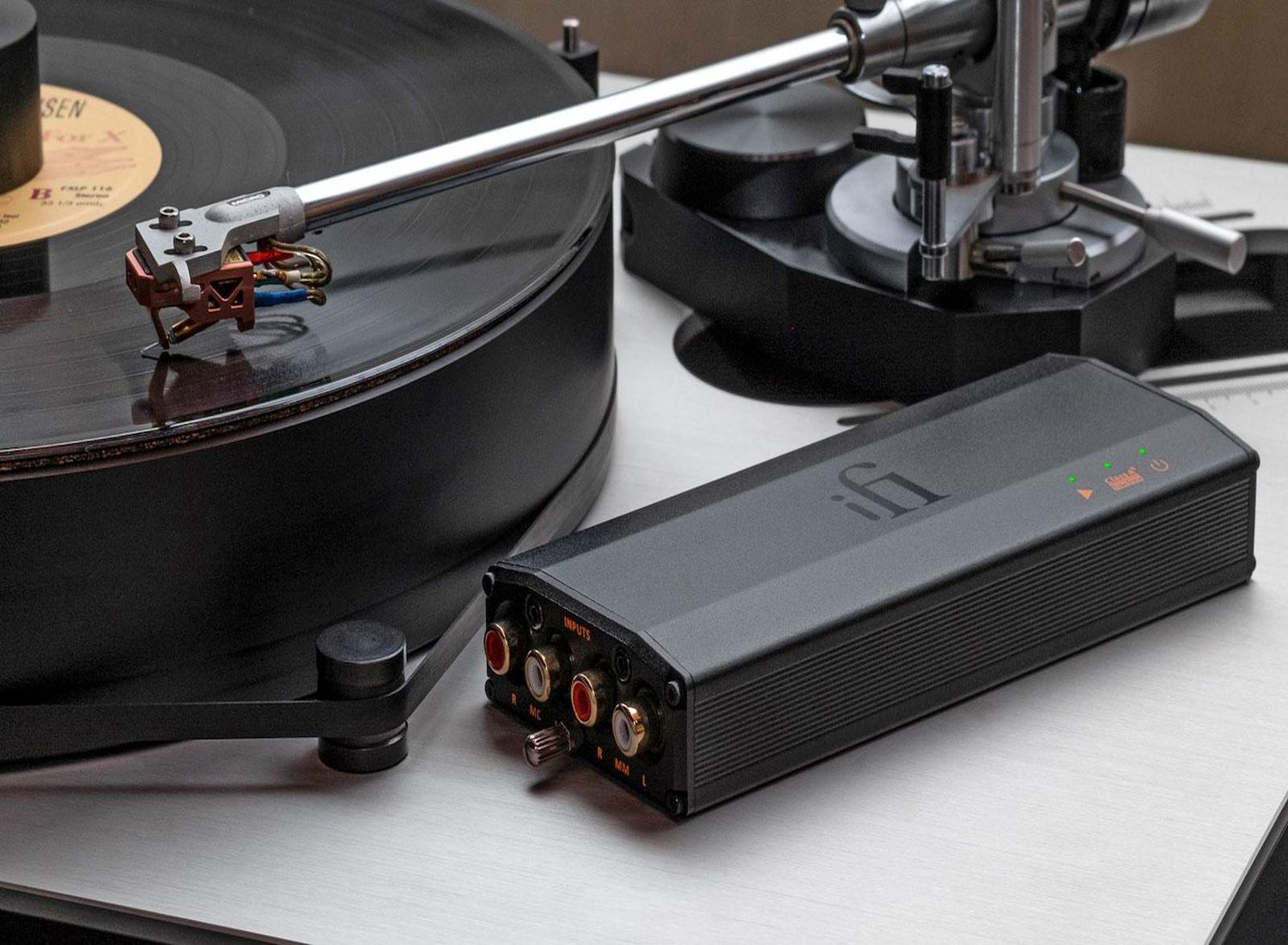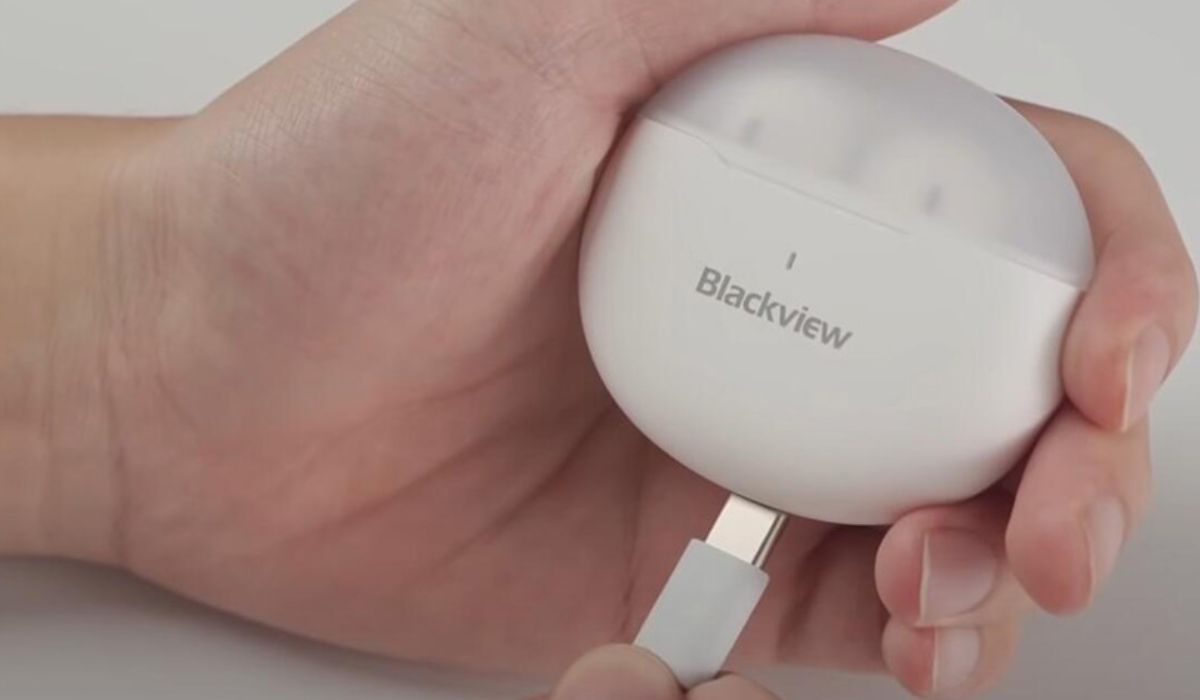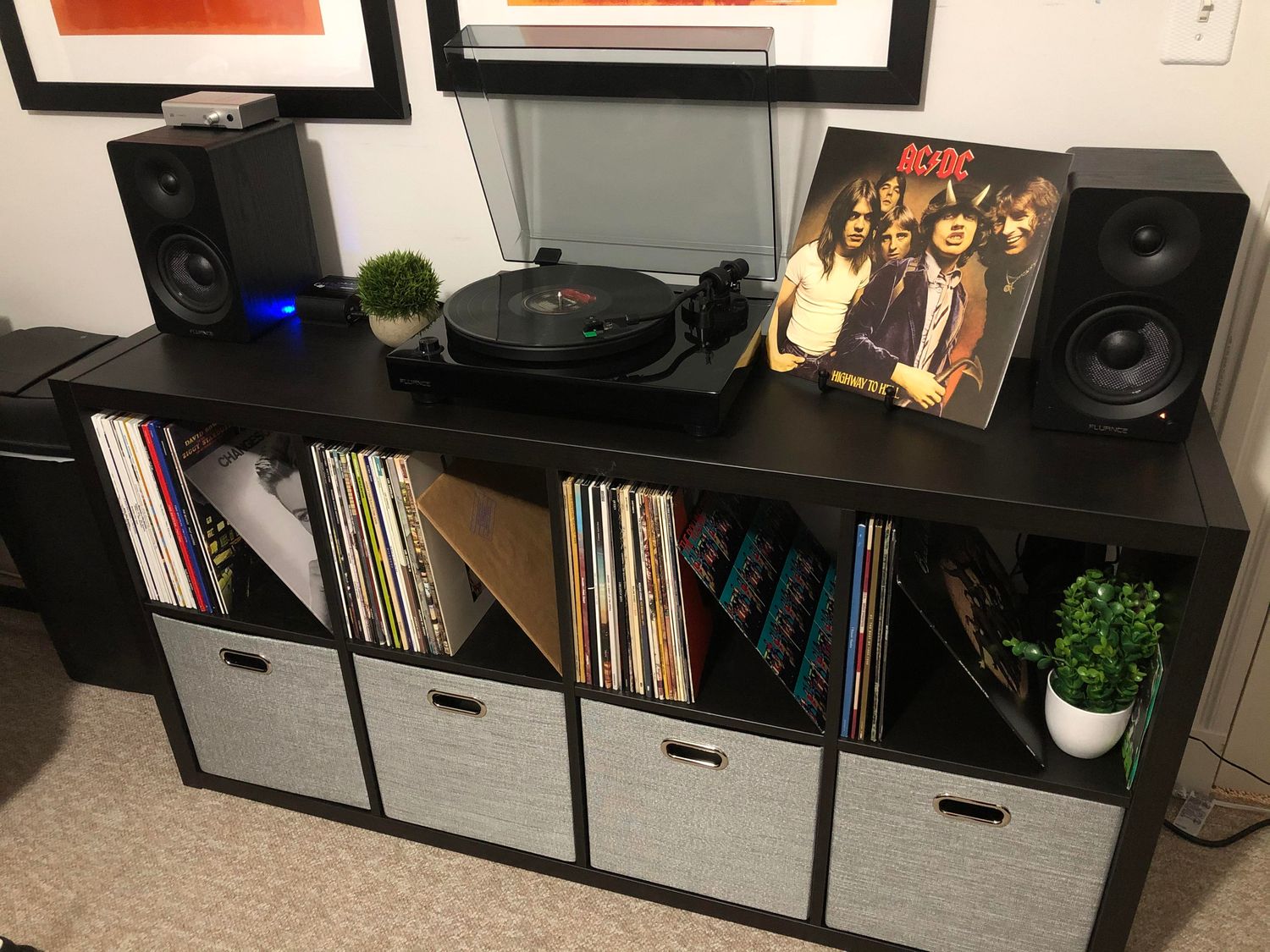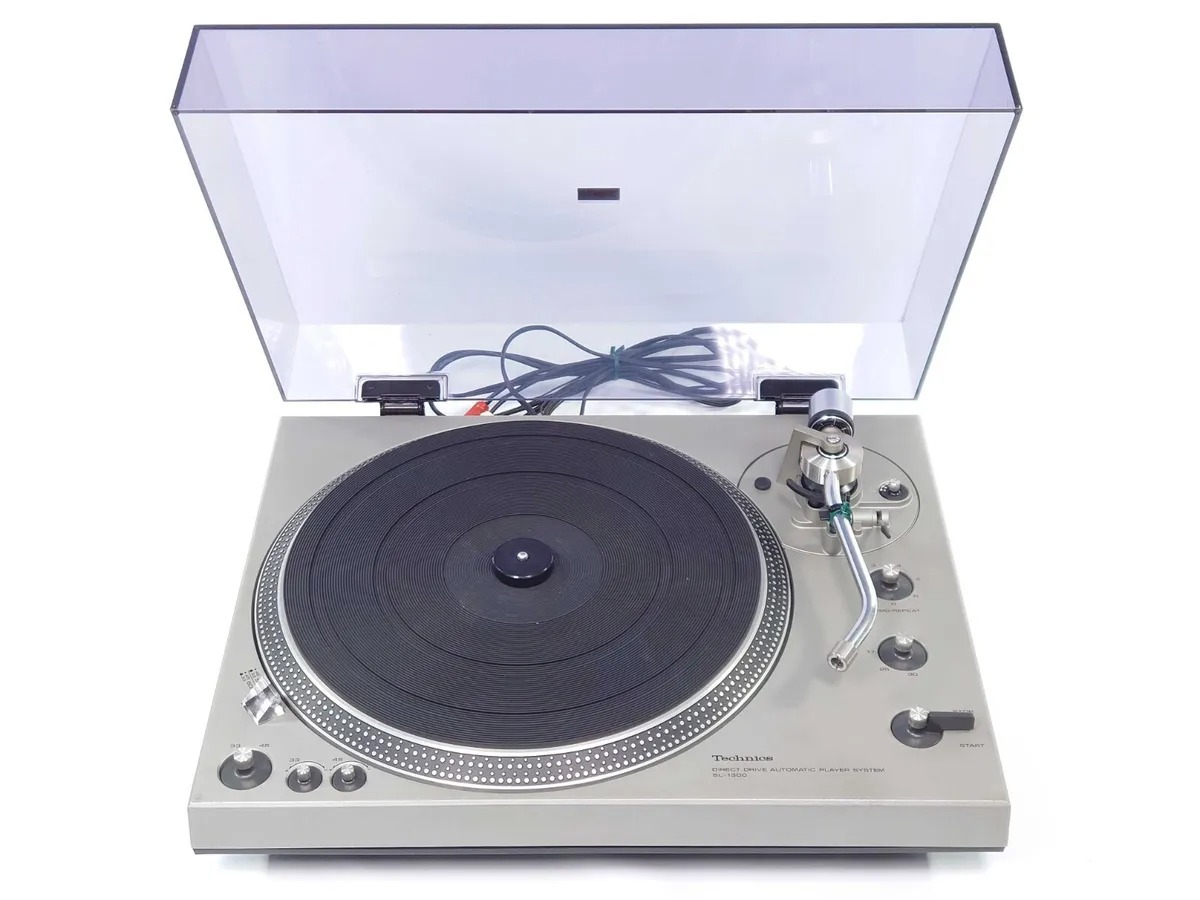Home>Devices & Equipment>Turntable>How Do I Make My Pioneer Pl-518 In To A Manual Turntable
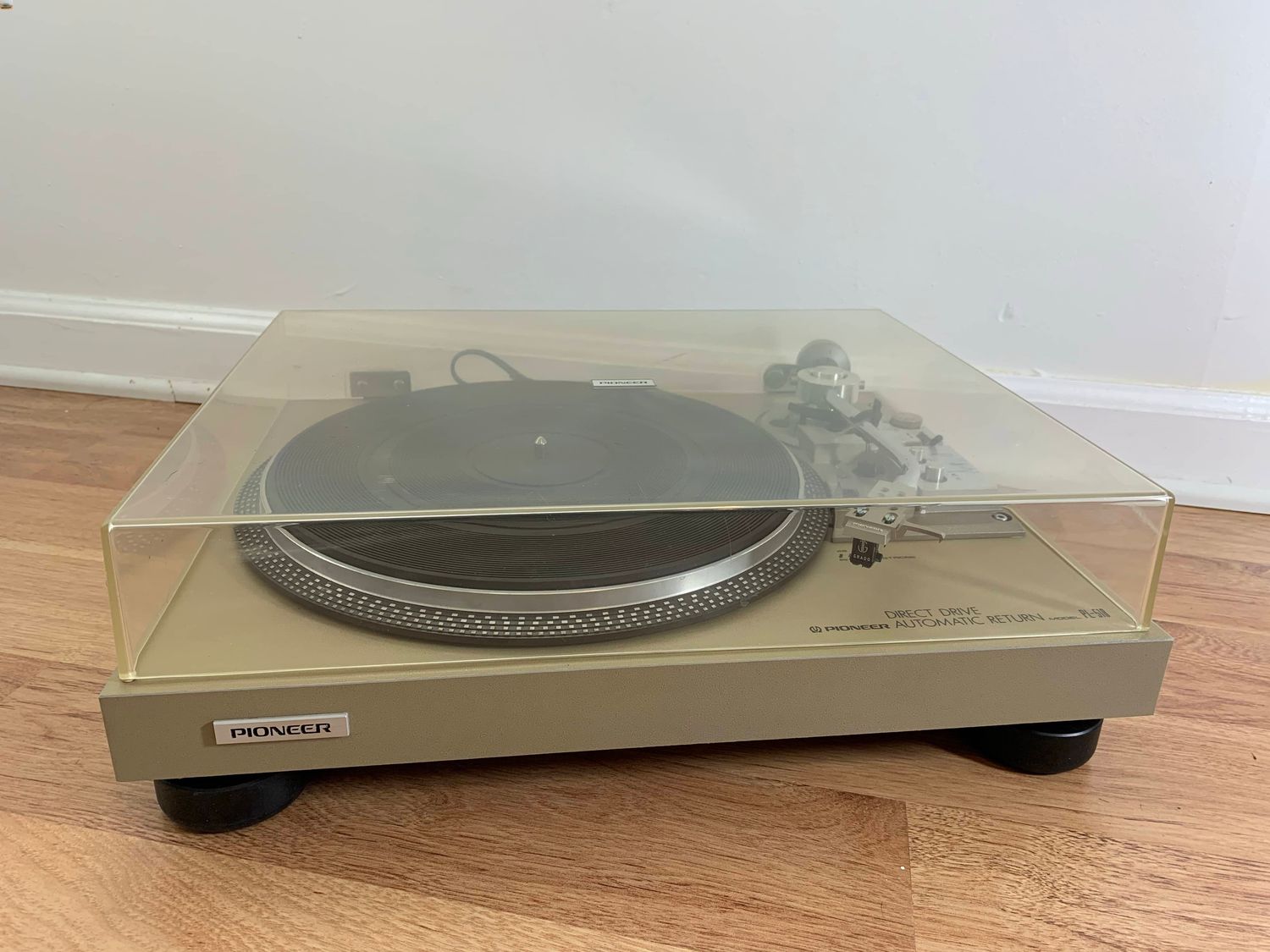

Turntable
How Do I Make My Pioneer Pl-518 In To A Manual Turntable
Published: January 20, 2024
Learn how to convert your Pioneer PL-518 turntable into a manual turntable. Step-by-step guide for a seamless transition.
(Many of the links in this article redirect to a specific reviewed product. Your purchase of these products through affiliate links helps to generate commission for AudioLover.com, at no extra cost. Learn more)
Table of Contents
Introduction
Welcome to the world of vinyl records and turntables! If you’re a music enthusiast who appreciates the warm sound and nostalgic experience of playing vinyl, you may be interested in making your Pioneer PL-518 turntable into a manual model. Converting an automatic turntable into a manual one can provide greater control and enhance the overall vinyl listening experience.
The Pioneer PL-518 is a popular model known for its reliability and performance. It was originally designed as an automatic turntable, meaning that it has mechanisms in place to automatically start, stop, and return the tonearm at the end of a record. While automatic turntables can be convenient, some vinyl enthusiasts prefer the manual operation as it allows for more precise control and the potential for improved sound quality.
In this article, we will guide you through the step-by-step process of transforming your Pioneer PL-518 into a manual turntable. Please note that this modification requires some technical skills and may void any existing warranty on your turntable. If you’re not confident in your abilities or are concerned about potential damage, it’s always best to consult a professional technician.
Before we begin, let’s take a moment to gather the necessary tools and materials you’ll need for this conversion process. Ensuring you have everything ready beforehand will make the process smoother and more efficient. Let’s move on to the next section to get started!
Step 1: Gathering the necessary tools and materials
Before you begin the process of converting your Pioneer PL-518 into a manual turntable, it’s important to make sure you have all the necessary tools and materials at hand. Here’s a list of what you’ll need:
- Screwdriver set: A set of screwdrivers with different sizes and types, including flathead and Phillips-head screwdrivers, will be necessary for removing and replacing various components of the turntable.
- Platter mat: A platter mat is used to provide proper cushioning and grip for the vinyl record. Look for a high-quality mat made of materials like rubber or cork to ensure optimal sound reproduction.
- Tweezers: These will come in handy for handling small parts and wires during the conversion process.
- Anti-skate weight: An anti-skate weight helps to counterbalance the force that pulls the tonearm towards the center of the record, ensuring smooth tracking and minimizing distortion.
- Carbon fiber brush: This is a essential tool for keeping your vinyl records clean and free from dust and static buildup.
- Isopropyl alcohol: Isopropyl alcohol is an effective cleaning agent for removing dirt and grime from various parts of the turntable, including the tonearm and platter.
In addition to these tools, it’s also important to have a clean and well-lit workspace to perform the conversion. Make sure you have ample space to lay out the turntable components and work comfortably without any distractions.
Once you’ve gathered all the necessary tools and materials, you’re ready to move on to the next step: removing the automatic mechanism. This is a crucial step in converting your Pioneer PL-518 into a manual turntable, so let’s dive right in!
Step 2: Removing the automatic mechanism
Now that you have gathered all the necessary tools and materials, it’s time to begin the process of removing the automatic mechanism from your Pioneer PL-518 turntable. This step is essential in converting it into a manual turntable. Follow these steps to remove the automatic mechanism:
- Disconnect the power: Before starting any work on your turntable, make sure it is unplugged from the power source to prevent any accidents.
- Remove the platter: The platter is the rotating disc where you place the vinyl record. Lift the platter straight up while applying gentle pressure to detach it from the turntable. Set the platter aside in a safe location.
- Locate the automatic mechanism: The automatic mechanism usually sits beneath the platter. Look for any belts, levers, or gears that are responsible for the automatic operation.
- Disconnect the tonearm: The tonearm is the part that houses the stylus and tracks the vinyl record. Carefully disconnect the wires attached to the tonearm. Take note of how the wires are connected as you will need to reconnect them later.
- Remove the automatic parts: Using your screwdriver, remove any screws or fasteners that are holding the automatic mechanism in place. Take your time and be meticulous to ensure you don’t damage any components.
- Store the automatic parts: Set aside the automatic parts in a safe place. You may want to keep them in case you decide to revert the turntable back to its automatic function in the future.
Once you have successfully removed the automatic mechanism, you’re one step closer to having a fully manual turntable. In the next step, we will focus on adjusting the turntable speed to ensure optimal performance. Stay tuned!
Step 3: Adjusting the turntable speed
Now that you have removed the automatic mechanism from your Pioneer PL-518 turntable, it’s time to focus on adjusting the turntable speed. Accurate speed control is crucial for optimal playback performance and ensuring that your vinyl records sound their best. Here are the steps to adjust the turntable speed:
- Identify the speed adjustment controls: Look for the speed adjustment controls on your turntable. These are usually located near the motor or on the underside of the turntable. You may find switches, dials, or pots that can be adjusted to control the speed.
- Refer to the manufacturer’s instructions: Consult the manufacturer’s instructions or the user manual for guidance on how to adjust the speed. Different turntables may have different methods for speed adjustment, so it’s important to follow the specific instructions provided for your Pioneer PL-518 model.
- Use a strobe disc: Some turntables come with a strobe disc or a separate tool for speed calibration. If your Pioneer PL-518 has one, place the strobe disc on the platter and start the turntable. The strobe pattern will appear to be still or moving depending on whether the speed is accurate or not. Adjust the speed control until the pattern appears stationary, indicating that the speed is correct.
- Check with a smartphone app: Alternatively, you can use a smartphone app specifically designed for turntable speed calibration. These apps utilize the camera on your phone to detect the rotation speed and provide real-time feedback. Follow the instructions on the app to adjust the turntable speed to the desired level.
- Listen for pitch variations: As an additional step, listen carefully to the audio playback. If the pitch sounds too high or too low, make fine adjustments to the speed control to achieve the correct pitch. Trust your ears and make small incremental changes until the pitch is accurate.
Once you have successfully adjusted the turntable speed, you’re ready to move on to the next step: replacing the tonearm. The tonearm plays a critical role in tracking the vinyl record and producing high-quality sound. In the next section, we will guide you through the process of replacing the tonearm. Let’s keep the momentum going!
Step 4: Replacing the tonearm
Replacing the tonearm is an important step in the process of converting your Pioneer PL-518 turntable into a manual model. The tonearm is responsible for tracking the vinyl record, ensuring proper stylus alignment, and ultimately delivering high-quality sound. Follow these steps to replace the tonearm:
- Select a compatible tonearm: Before proceeding, make sure to choose a compatible tonearm for your Pioneer PL-518 turntable. Look for a tonearm that matches the specifications and mounting requirements of your turntable model. Consult the user manual or professional technicians for guidance if needed.
- Remove the old tonearm: Begin by loosening and removing the screws or fasteners that secure the old tonearm to the turntable base. Be cautious and gentle when handling the tonearm to avoid any damage to the wiring or delicate components.
- Disconnect the wires: Carefully detach the wires connecting the old tonearm to the turntable. Take note of the wire configuration and any labels or markings for reference when connecting the new tonearm.
- Mount the new tonearm: Align the new tonearm with the mounting holes on the turntable base. Insert the mounting screws and tighten them securely to ensure proper stability and alignment.
- Connect the wires: Reconnect the wires to the new tonearm following the same configuration or markings as noted earlier. Take care to make secure connections and prevent any accidental wire damage or misconfiguration.
- Secure the tonearm: Once the wires are connected, secure the tonearm in its resting position using any fasteners or locks provided with the new tonearm. This will help prevent any movement or accidental damage during operation.
By replacing the tonearm, you have taken a significant step towards transforming your Pioneer PL-518 into a manual turntable. But we’re not done yet! In the next step, we will focus on calibrating the new manual system to ensure precise tracking and accurate sound reproduction. Let’s dive in!
Step 5: Calibrating the new manual system
Now that you have replaced the tonearm, it’s time to calibrate the new manual system on your Pioneer PL-518 turntable. Proper calibration is essential for achieving precise tracking, minimizing distortion, and ensuring accurate sound reproduction. Here are the steps to calibrate the new manual system:
- Set the tracking force: The tracking force refers to the amount of downward pressure applied by the stylus on the vinyl record. Consult the manufacturer’s instructions or the specifications for the new tonearm to find the recommended tracking force range. Use a tracking force gauge or a digital scale specifically designed for turntables to set the tracking force within the recommended range.
- Adjust the anti-skate: Anti-skate is a mechanism that counterbalances the inward force exerted on the tonearm by the groove of the record. It helps to prevent distortion and ensure proper tracking. Consult the manufacturer’s instructions or user manual to determine the recommended anti-skate setting for your new tonearm. Typically, a matching setting to the tracking force is advisable.
- Check the horizontal alignment: Place a blank record or alignment protractor on the platter and set the tonearm down. Observe the position of the stylus in relation to the alignment guide or the null points on the protractor. Make any necessary adjustments to ensure the stylus is aligned correctly in both the horizontal and vertical planes.
- Check the vertical tracking angle (VTA): The VTA refers to the angle at which the tonearm sits relative to the record. Use a VTA measurement tool or follow the manufacturer’s instructions to adjust the vertical tracking angle as per the recommended specifications. This helps ensure the proper balance of the tonearm and minimizes distortion.
- Inspect cartridge alignment: Check the alignment of the cartridge within the new tonearm. Use a cartridge alignment tool or follow the specific guidelines provided with the cartridge to ensure accurate alignment. Proper cartridge alignment is crucial for optimal tracking and sound quality.
- Perform test plays: After completing the calibration steps, it’s time to perform some test plays. Choose a high-quality vinyl record and play it on your newly converted manual turntable. Listen carefully for any distortion, skipping, or other irregularities in the sound. Make further adjustments if necessary to achieve the best possible sound quality.
By calibrating the new manual system, you have fine-tuned your Pioneer PL-518 turntable for optimal performance. Now, it’s time for the final step: testing the manual turntable functionality. Let’s proceed and ensure everything is in working order!
Step 6: Testing the manual turntable functionality
Now that you have completed the conversion process and calibrated the new manual system on your Pioneer PL-518 turntable, it’s time to put it to the test. Testing the functionality of your manual turntable will ensure that everything is in working order and that you can enjoy a seamless vinyl listening experience. Follow these steps to test the functionality:
- Connect the turntable: Connect the turntable to your amplifier or receiver using high-quality audio cables. Make sure the connections are secure to avoid any audio signal loss or interference.
- Power on the turntable: If your turntable has a power switch, turn it on. If not, simply start the platter rotation by manually spinning it.
- Select a vinyl record: Choose a vinyl record from your collection and place it on the platter. Ensure that the record is clean and free from any dust or debris that could impact playback.
- Release the tonearm: Gently lift the tonearm from its resting position and position it at the beginning of the vinyl record. Slowly lower the tonearm onto the record, taking care to avoid any sudden or rough movements.
- Monitor the playback: Observe the tonearm’s tracking and ensure that the stylus is properly seated in the record’s groove. Listen for clear and balanced sound reproduction, free from any distortion or skipping.
- Monitor the manual operation: As you play the record, pay attention to the manual operation of the turntable. Ensure that the platter rotates smoothly and consistently at the desired speed. Check that the tonearm moves freely along the record’s surface without any resistance or unwanted movements.
- Make fine adjustments if necessary: If you notice any issues during the testing phase, such as tracking problems or sound quality concerns, make any necessary fine adjustments to the tracking force, anti-skate, or other settings. Test again to assess if the adjustments have resolved the issues.
By thoroughly testing the functionality of your manual turntable, you can verify that the conversion process was successful and that all components are working as intended. Once you have completed the testing phase and are satisfied with the performance of your manual turntable, you can sit back, relax, and enjoy the rich and immersive sound of vinyl records.
Congratulations! You have successfully transformed your Pioneer PL-518 into a manual turntable. By removing the automatic mechanism, adjusting the turntable speed, replacing the tonearm, calibrating the new manual system, and testing the functionality, you have taken the necessary steps to elevate your vinyl listening experience. Now, it’s time to gather your favorite records, sit back, and indulge in the timeless beauty of analog music. Happy listening!
Conclusion
Converting your Pioneer PL-518 turntable into a manual model can be a rewarding process that enhances your vinyl listening experience. By removing the automatic mechanism, adjusting the turntable speed, replacing the tonearm, calibrating the new manual system, and testing the functionality, you have taken the necessary steps to transform your turntable into a precise and high-performing manual device.
With the automatic mechanism removed, you have gained greater control over your vinyl playback, allowing for a more immersive and customized experience. Adjusting the turntable speed ensures that your records play at the correct RPM, delivering optimal sound quality and fidelity. By replacing the tonearm, you have improved the tracking ability and accuracy of your turntable, resulting in a more precise and detailed audio reproduction.
Calibrating the new manual system ensures that all components are properly aligned, tracking force is set correctly, and anti-skate is adjusted for accurate playback and minimal distortion. By testing the functionality of your manual turntable, you can ensure that all the modifications and adjustments have been successful and that you can enjoy smooth and flawless vinyl playback.
Remember, when performing these modifications, it’s essential to have the necessary tools, materials, and technical skills. If you’re unsure or uncomfortable with any step, it’s always best to seek professional assistance to avoid potential damage or injury.
Now that your Pioneer PL-518 has been transformed into a manual turntable, you can fully immerse yourself in the world of vinyl, enjoying the warm and enchanting sound that only analog music can provide. So grab your favorite records, sit back, and embark on a musical journey filled with nostalgia and pure audio bliss!

